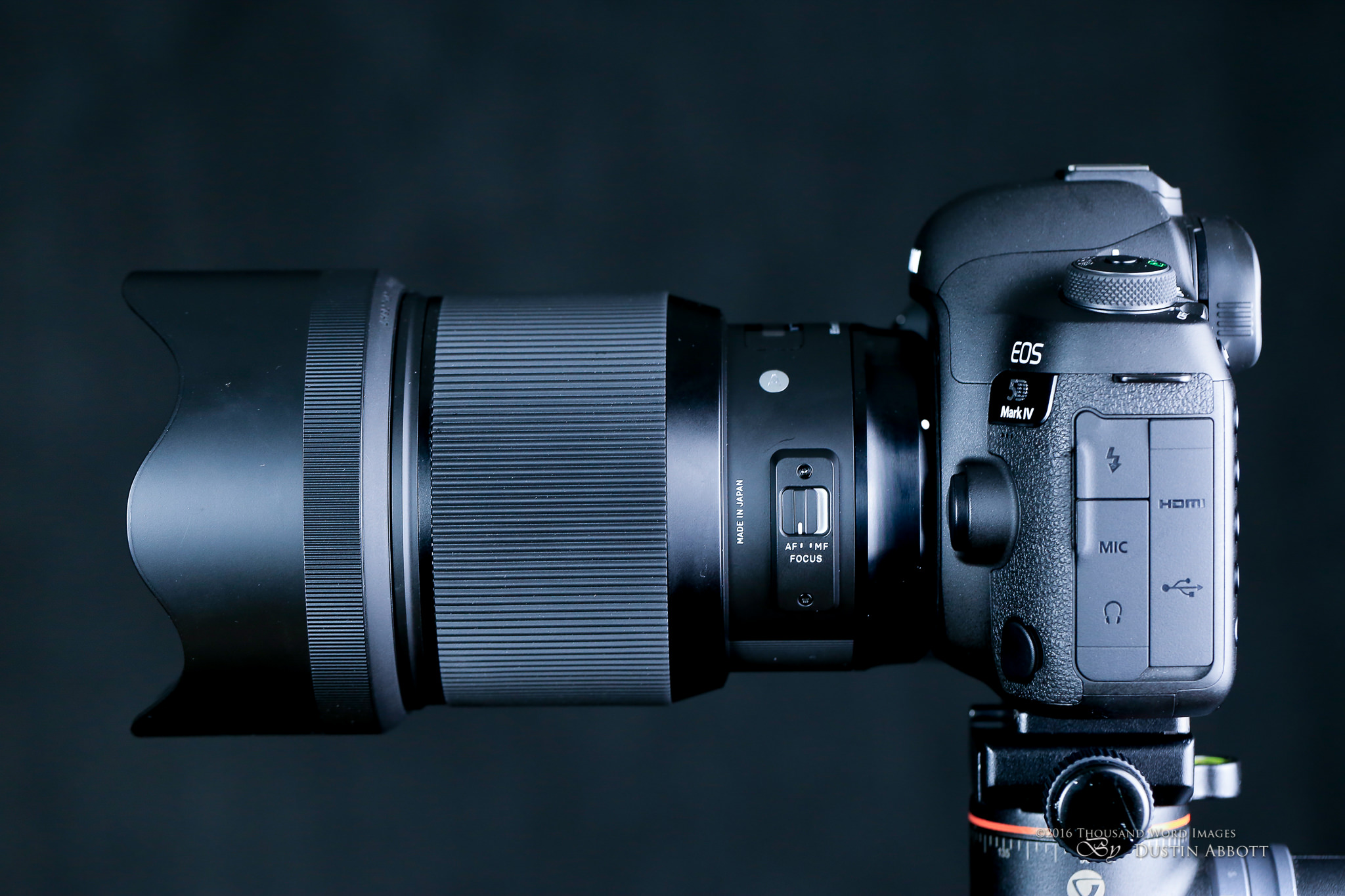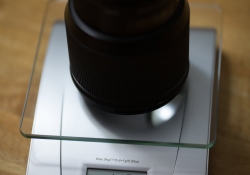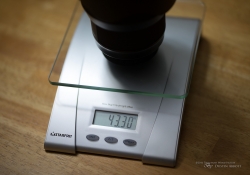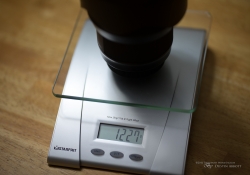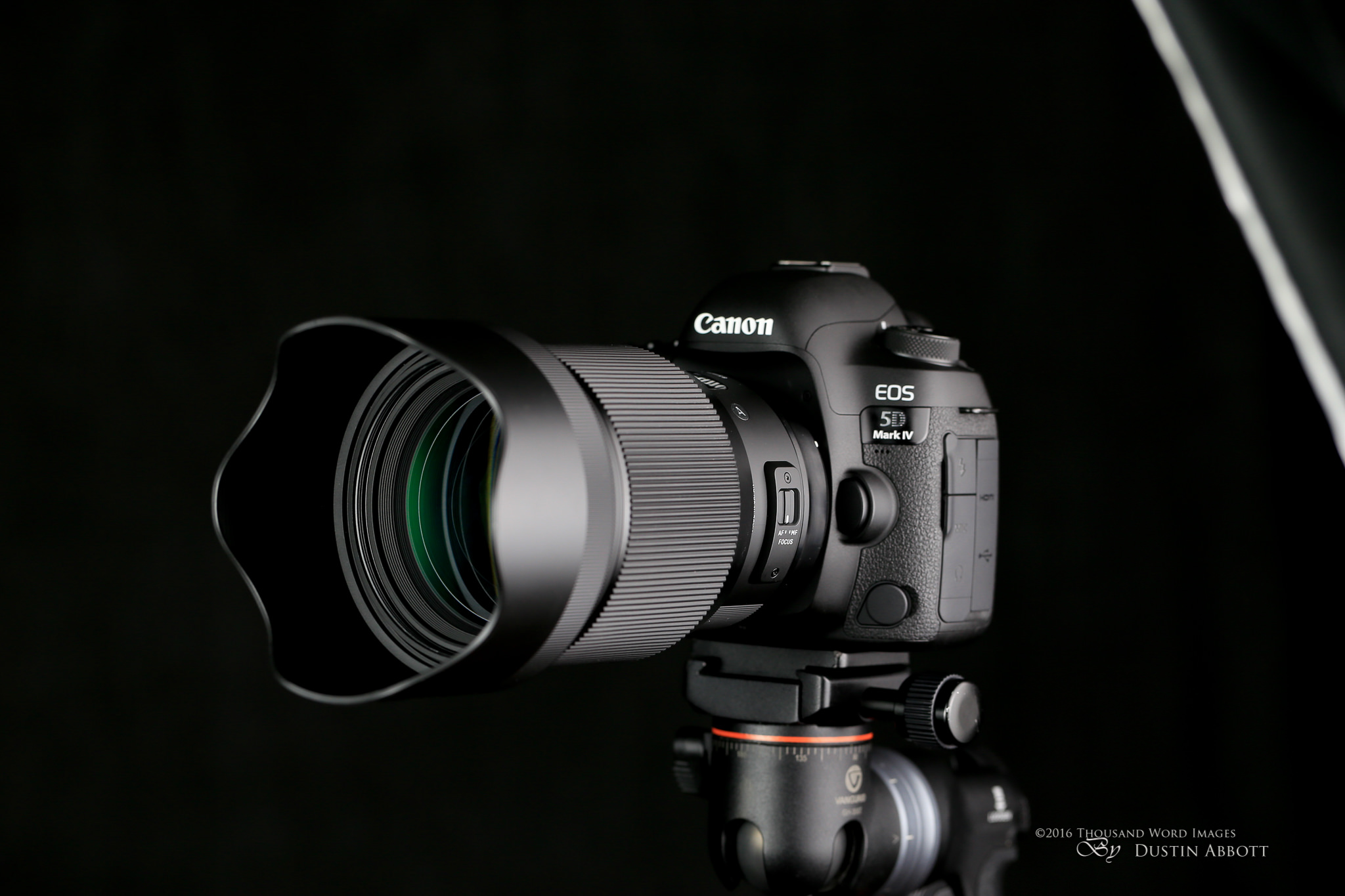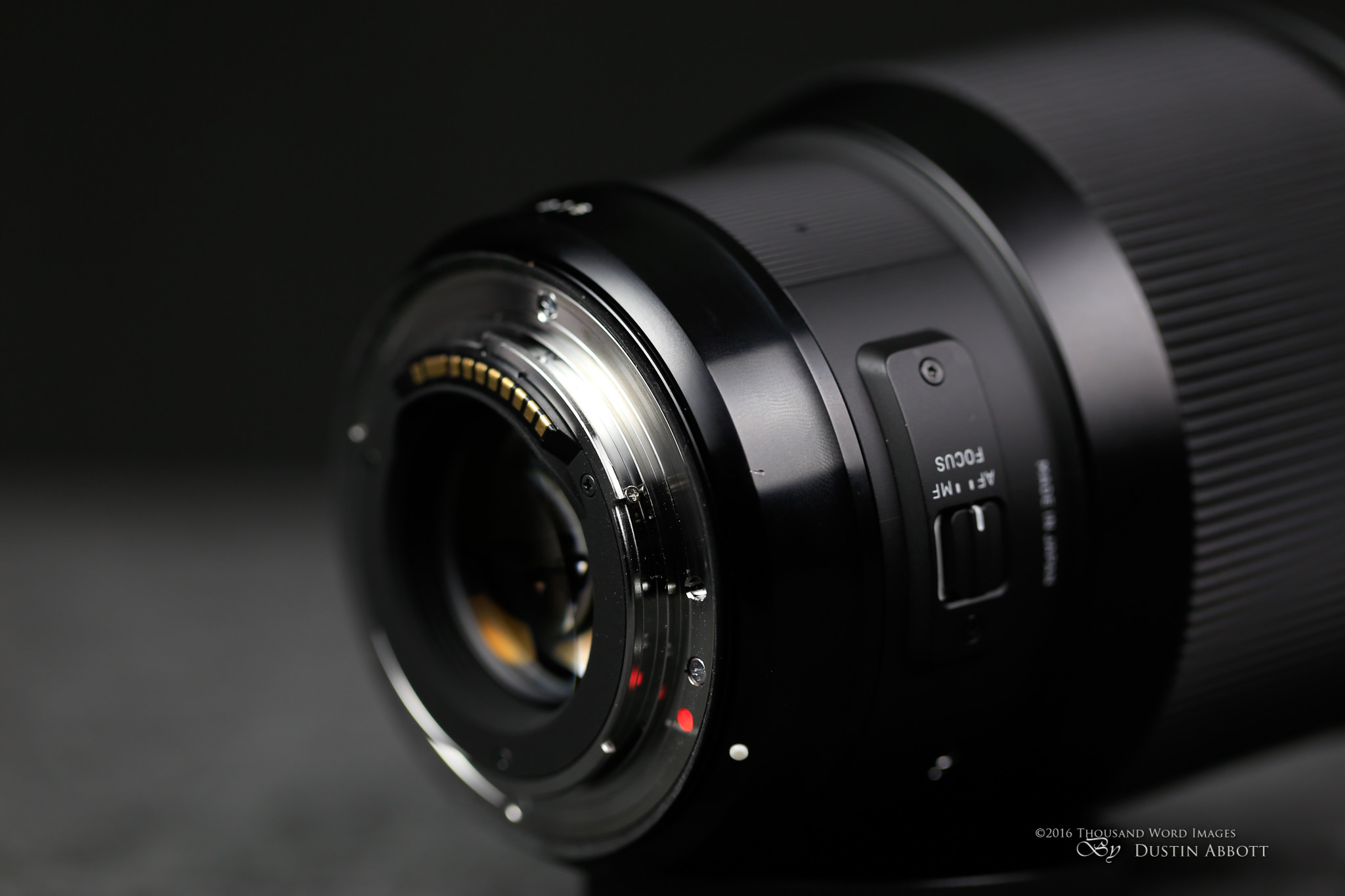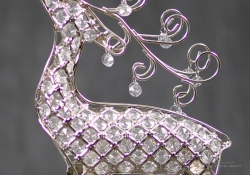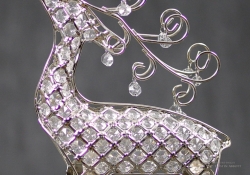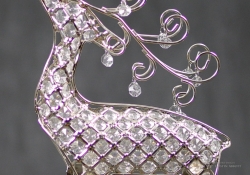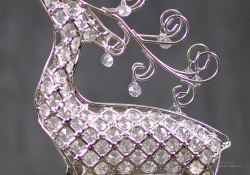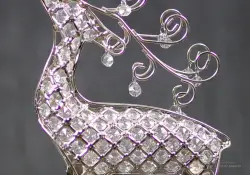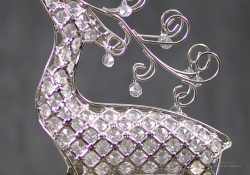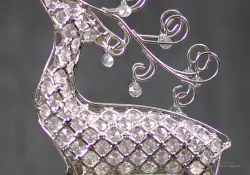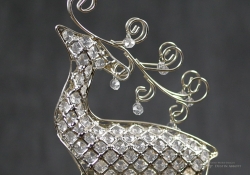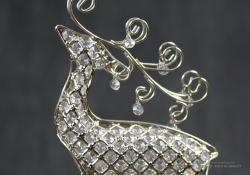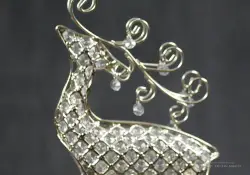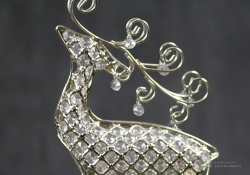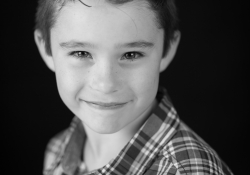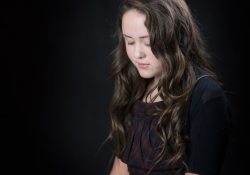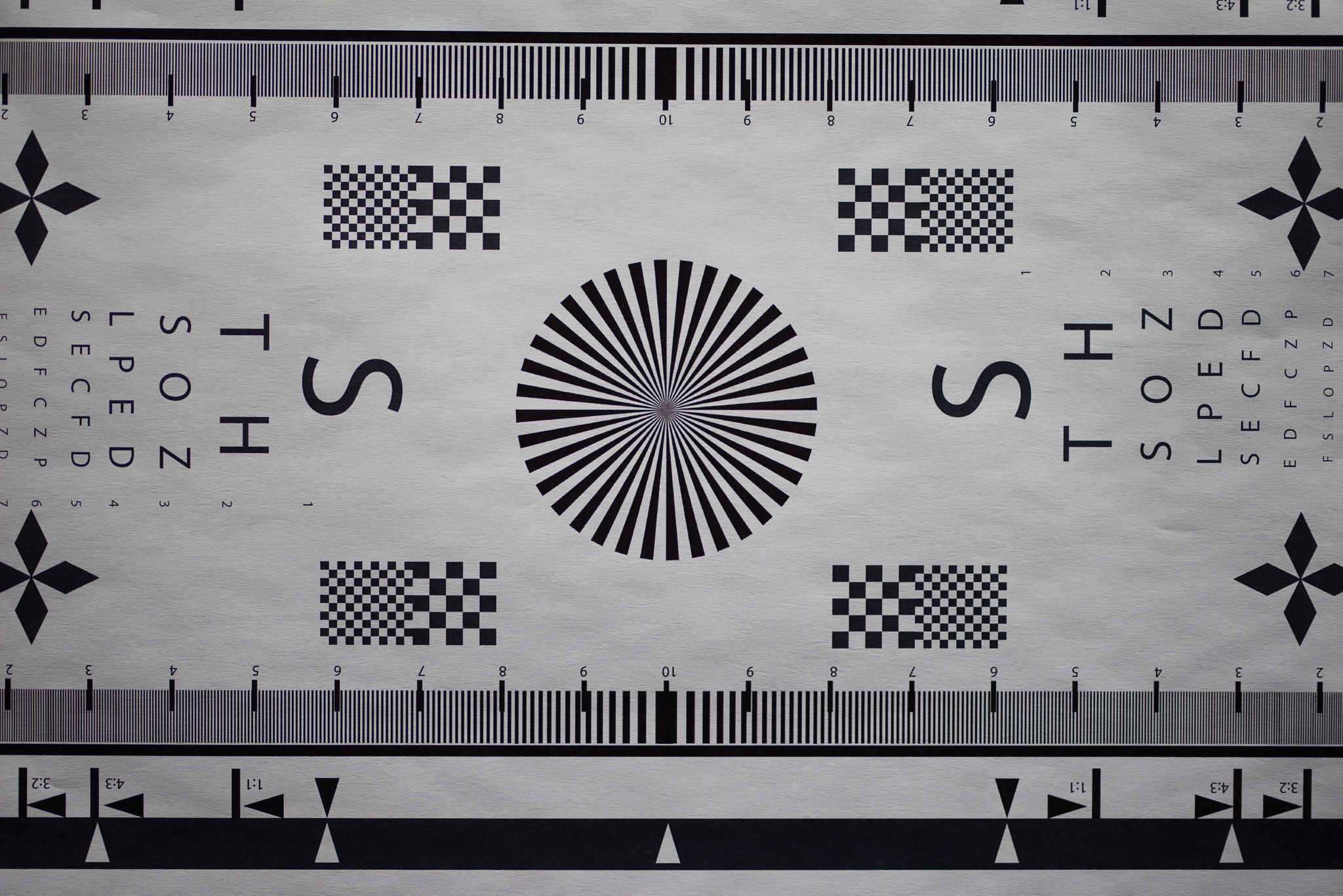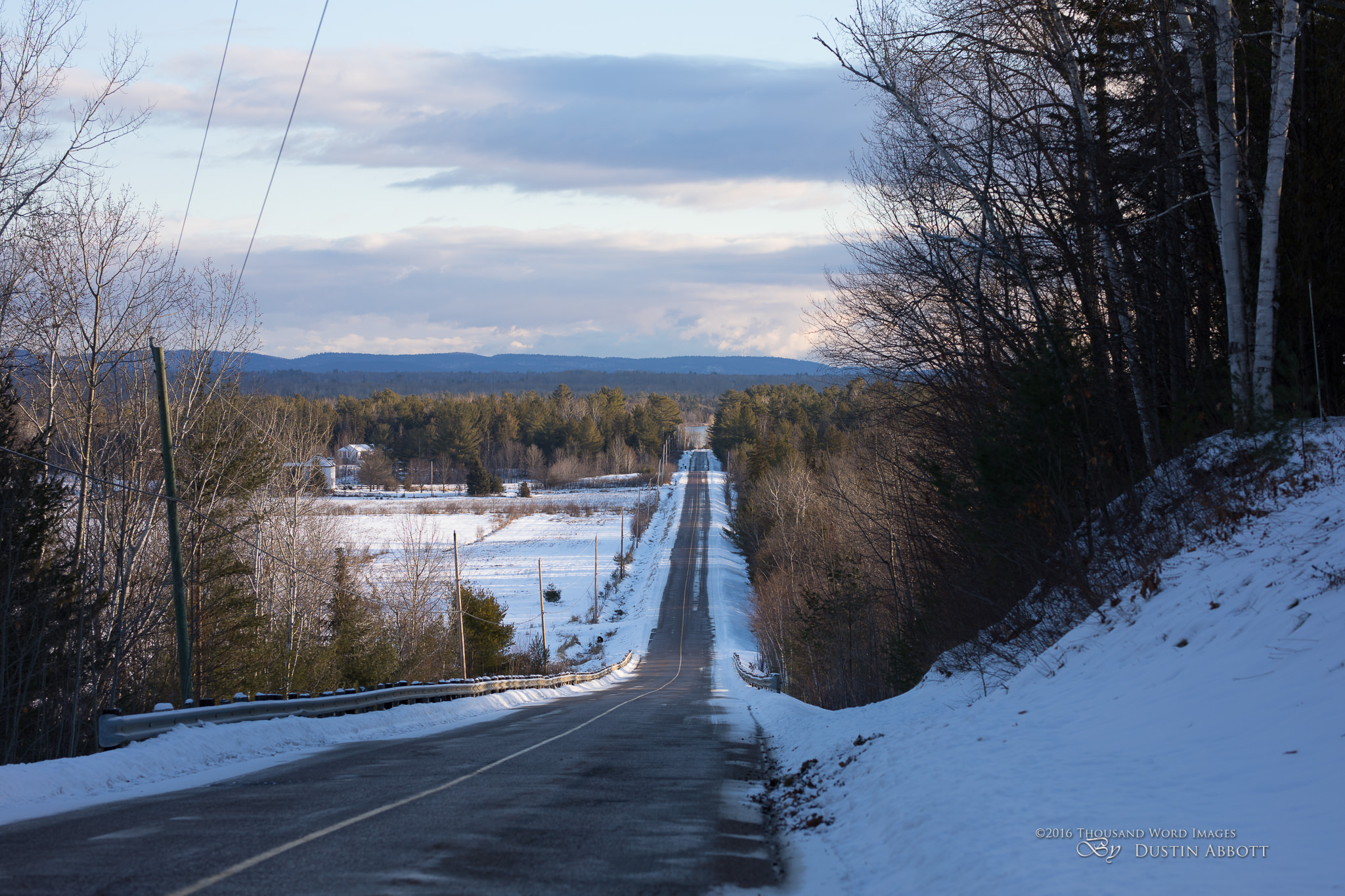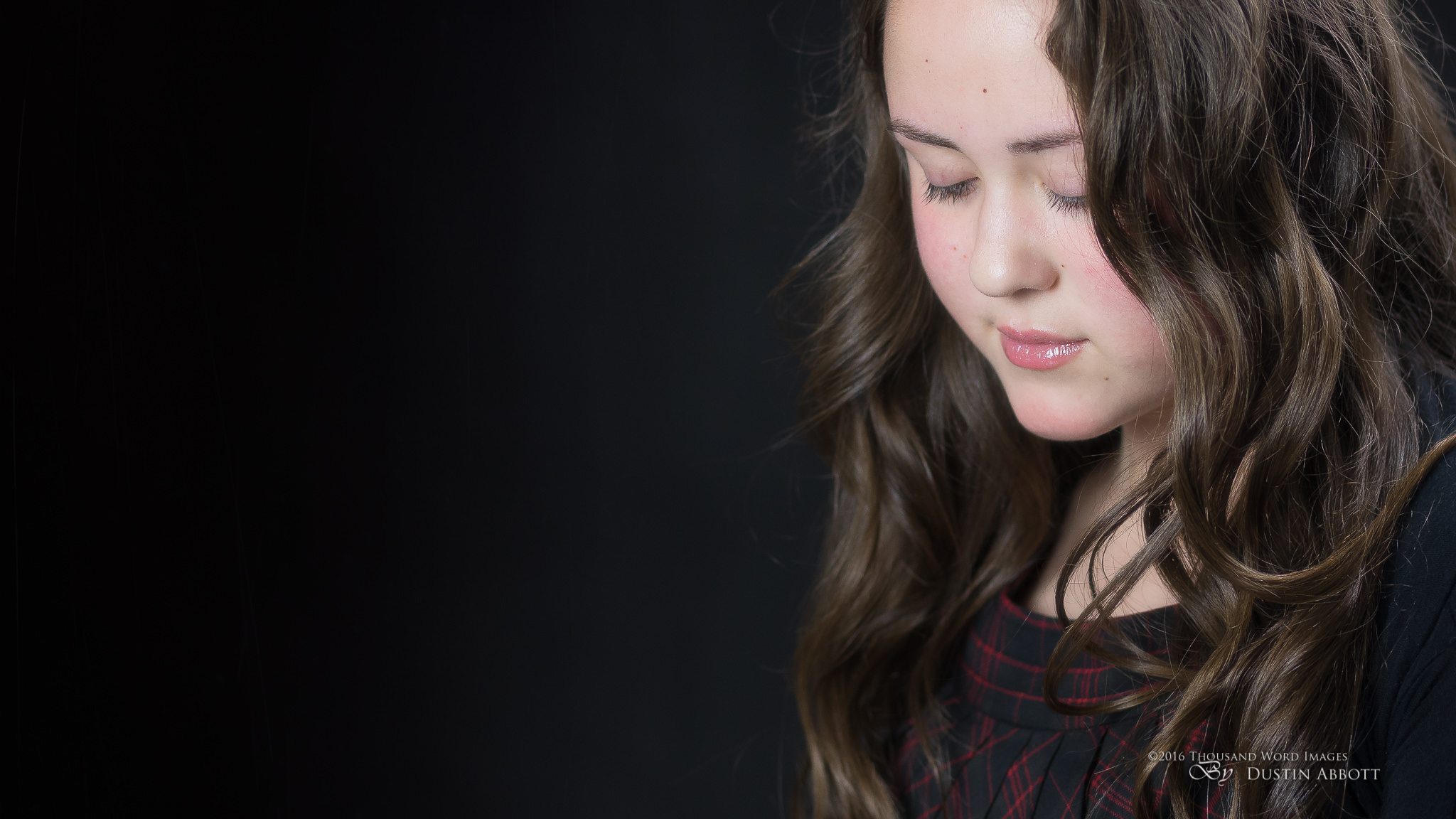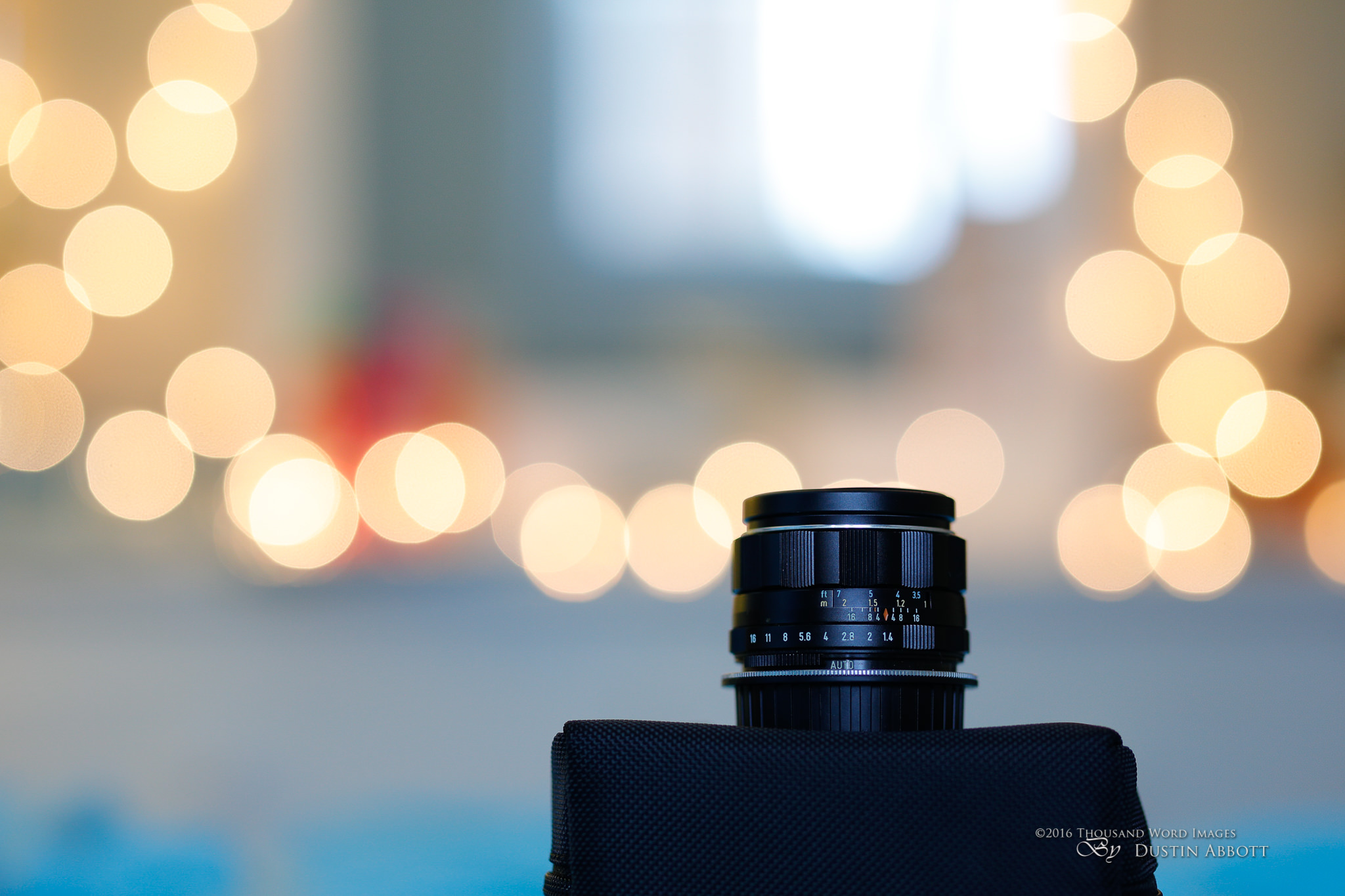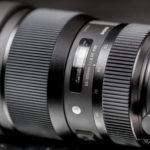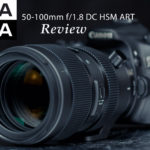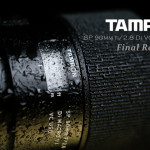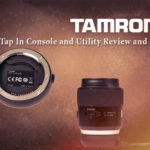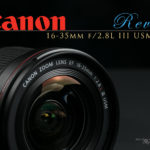I’ve been covering the Sigma ART series since early on (I actually covered the 50mm f/1.4 before the 35mm f/1.4, but I’ve basically only missed the 24mm f/1.4 in the entire series), but there is one focal length that more photographers have asked me about than any other. “When is the Sigma 85mm f/1.4 ART coming?” I didn’t really have an answer to that, as the Sigma EX 85mm f/1.4 (which I reviewed here) was a relatively new lens (released in 2011) and was already quite good. Beyond that, it also was fairly expensive (right around $1000), which has [previously] been the limit of the ART series’ price point. I didn’t think Sigma was in a rush to replace that lens. And while Sigma did release a number of other lenses in the series first, they have now gotten around to building the lens that a lot of fans wanted the most. The 85 ART is now here!
Prefer to watch your reviews? Click the video below to watch my coverage of the lens.
Check me out on:Google+: | Facebook: | Twitter: | Flickr: | 500px: | Sign Up for My Newsletter :
Build and Handling
I think the initial reaction of every person who first sees the new 85 ART will be, “Wow, that thing is huge!” Sigma has clearly gone a completely different route with this lens as opposed to the EX version released just five years ago. The ART version has grown in every possible way.
Here’s a quick look at the raw stats:
| Focal Length | 85mm | ||
| Aperture | Maximum: f/1.4 Minimum: f/16 |
||
| Camera Mount Type | Canon EF | ||
| Format Compatibility | 35mm Film / Full-Frame Digital Sensor | ||
| Angle of View | 28.6° | ||
| Minimum Focus Distance | 33.46″ (85 cm) | ||
| Magnification | 0.12x | ||
| Maximum Reproduction Ratio | 1:8.5 | ||
| Elements/Groups | 14/12 | ||
| Diaphragm Blades | 9, Rounded | ||
| Filter Thread | Front: 86 mm | ||
| Dimensions (DxL) | Approx. 3.73 x 4.97″ (94.7 x 126.2 mm) | ||
| Weight | Not Specified By Manufacturer | ||
It’s that last thing that had caught my attention from the very first press release. It is completely out of character for Sigma to not release the weight of a lens, and I’ve actually had a number of people ask me the question of how heavy the 85 ART was. I threw it on a highly precise kitchen scale and found the following truths:
Weight with hood and lens caps is 1227 grams/43.3oz on my scale. Without hood or caps it weighs 1139g. I weighed the Tamron 85mm f/1.8 VC at the same time with the caps and hood on and got a 787g/27.75oz weight. Since the Tamron is officially listed as being 700 grams I suspect the typical weight of the lens is done with the bare lens without caps or hood, so 1139g or 40.18oz. It’s heavy. This definitely puts the 85 ART in Otus 85mm (1200g) or Milvus 85mm (1280g) range when it comes to weight.
The 85 ART is also big. Really big. It is 3.73”/94.7mm in diameter and is 4.97”/126.2mm long. With the sizable petal-shaped hood attached it is over 7”/18cm long. The Otus lens is a little bit thicker around (3.98”/101mm) but isn’t quite as long (4.88”/124mm). No matter how you slice it, the Sigma 85mm f/1.4 ART is a BIG lens. The previous generation Sigma EX 85mm f/1.4 was only 3.4”/86.4cm in both length and girth and weighed 725g, making the new lens 40% bigger overall. Sigma clearly took a page out of Zeiss’s book with the Otus series and decided that they would make an optically superior lens without worrying about typical engineering restraints (small and light).
But that decision does have repercussions. There are a lot of photographers that are concerned about the runaway train of ever growing lenses. The Otus lens was never really designed to be a mass market lens. It was a niche tool for those that needed the absolute best (in actuality or for their egos). But Sigma is in a different kind of market. This lens needs to have some mass market appeal, and I fear the massive size is simply going to put off a number of photographers. It is approaching the weight range of the 70-200mm f/2.8 zooms (typically around 1400 grams), but, unlike them, it doesn’t have an image stabilizer. Higher resolution bodies are growing in number, and they tend to be very punishing of motion blur. The 85 ART weighs enough to feel front heavy even on my full frame 5D Mark IV body, and I’ve been surprised at a few photos where I’ve seen motion blur despite shooting with a reasonable shutter speed range (160-250th, most often). A lens this long and heavy could have used Sigma’s OS, which in turn would have made it longer and heavier!
A young lady asked me through Twitter what the weight of the 85 ART was, and, when I told her, her response was that she had better hit the gym. You have to admire her determination, but there are a number of photographers who will take the easier route and choose a lighter lens.
That’s not to say there aren’t payoffs for Sigma’s choice to “go big or go home”. This lens has (by far) the lowest amount of vignette I’ve ever seen with an 85mm lens. Even at f/1.4 it is minimal, and by f/1.8 it is pretty much nonexistent. Light transmission is excellent through the lens, and I wouldn’t be surprised if its T-stop (light transmission) is pretty much equivalent to its F-stop (aperture size) value.
We will see how Sigma’s choices further play out as we examine the image quality from the lens.
Massive size aside, the Sigma 85mm f/1.4 ART is a beautiful lens. It has Sigma’s now familiar modern design language, which is very nice. Pretty much everything is black, but Sigma uses different textural finishes (from piano black to near matte) to create nice visual distinctions. The lens has a number of ever wider sections, with much of the lens dominated by a very big (2”/5cm) ribbed focus ring. That ring moves smoothly and has about 175 degrees of focus throw. The front element is massive, and the filter thread is 86mm, which puts filters into the rare and expensive category.
I had to laugh when I read this in the press release, “It is made from a thermally-stable composite material that is light and durable and it has a brass bayonet mount.” The material may be light, but the lens mostly certainly is not! There is a brass mount and other metals in the construction, but the primary material in the outer shell is engineered plastics like most Canon/Nikon lenses. Sigma is to be praised, however, for using materials on their modern lenses that “feel” a lot like metal (more so than Canon L lenses) but with the durability of modern engineered plastics. Tamron has elected to go with a lightweight aluminum in their new SP line, while Zeiss uses what feels like pig iron (I joke!). They actually use metal alloys. I honestly don’t know what material is the most durable for the long haul, as I try not to make a habit of dropping expensive lenses, but I suspect that most modern lenses are quite durable. I’ve certainly not heard any feedback from longer term ART series lens users having issues with the build, and the fit and finish is impeccable on the 85 ART.
The lens has a distance window with minimal MF aids (clearly not a priority here) and a single switch for AF/MF (though full time manual override is available through Sigma’s HSM motor). The 85 ART is the first of the ART series that I’ve used that has a rear gasket near the lens mount, though I can’t find any mention of weather sealing anywhere in Sigma’s literature. The new 12-24mm f/4 ART also has a rear gasket, but Sigma does actually mention some weather resistance for it. Curious. Still, if nothing else I am glad to see the gasket here. It does help prevent dust and moisture from entering in near the mount.
While the first impression might be all about the size of the lens, I think that many people will be equally impressed by the handsome look and build of this lens. Everything looks and works as it should. You can find more photos of this beauty in the lens image gallery.
85 ART Autofocus Performance
This is the part of the review that I often dread with Sigma lenses, as I have often struggled to get excellent autofocus performance out the ART series. There is rarely a problem with speed or sound from Sigma’s HSM motors. They focus quickly and quietly. My issue has been with autofocus accuracy, and from the feedback of other reviewers and anecdotal evidence from users, it clearly isn’t just me. Sigma knows how much is resting on this lens, though, and they have worked to fix it. They said this in their promotional materials, “The newly updated Hyper Sonic Motor (HSM) allows for 1.3X the torque of previous generations for fast and efficient autofocus.” Higher torque is a good start. It helps get the lens elements aligned quickly, which, in theory, should help them also align accurately on a more consistent basis.
Those that have been shooting with the Canon 85mm f/1.2L II will notice a big difference in focus speed when shooting with the 85 ART. It makes short work of every focus task save a rack through the whole focus range (from minimum to infinity). In head to head comparison with the Tamron 85 VC the Sigma had a slight edge in both initial focus speed and final lock-on. But I’m rarely disappointed with the focus speed from Sigma ART lenses; what I want to know is if I can rely on the focus results.
Ironically I felt like I got pretty good focus results from the 85 EX (previous generation) when I reviewed it; better results than I’ve had with a number of the ART series lenses.
So how about this lens?
I spent some time calibrating the 85 ART to give it the best chance. I used the optional USB dock along with the Reikan FoCal software I use for calibration to dial in AFMA values at different focus distances. I had no red flags during the calibration process, but that means little to me. I rarely have issues at the calibration stage with Sigma lenses; it is field use where I’ve run into more of the issues.
One nice thing about being to calibrate at different points is that it quickly became apparent to me where the weak link in my autofocus was. I was nailing shots out to about 12 feet with regularity, but wasn’t convinced that the accuracy from 12 feet to short of infinity was quite right. The USB dock allowed me to tweak only that value and allowed me to get more consistent results.
After shooting hundreds of real world shots with the lens from everything from portraits to landscapes to fine art shots to events, I felt like I got a pretty good sense of the performance. The good news is that I definitely felt my keeper rate was better than most ART series lenses I had previously used. In most shots I felt like the focus was either nailed or within acceptable ranges. There was an occasional inexplicable miss, but in the real world that does happen. I did notice a trend, however, and that was if I strayed outside of the center group area on my 5D Mark IV review body (which has one of the best AF systems in existence) my keeper rate with the 85 ART definitely dropped.
Time for a controlled test.
AF Repeatability
I set up studio lighting on a high contrast target (a reindeer statue with a lot of crystal parts that makes AF misses very obvious because of CA). I put the camera on a stable tripod, used a second second delay, shot a Live View focused image first for a control shot, and then shot a series of ten frames with the lens defocused between them. I switched to the Tamron 85 VC and did the same.
I was pleasantly surprised when reviewing the results. The ten shots were all accurately focused, with only the extremely minor shifts of framing that happen even with the best lenses. You can first see the AF point selected, and then the result of the 10 shots.
The Tamron delivered the same result, which didn’t surprise me as I’ve been using it for about six months and know it to be a very accurately focusing lens for me after tweaking it through Tamron’s own Tap In Console.
But things went rapidly downhill when I shifted my focus point to one on the outer left third of the frame (where you might focus on an eye in a portrait to maintain a rule of thirds composition). I repeated the sequence as before with five frames using the outer point. The Live View image was correctly focused, of course, but not one of the traditional Phase Detect (viewfinder) images were perfectly focused. A few were reasonably close, but at least three were within the range I would call unacceptable. Focus moved a bit, but it was clear from the green (rather than purple) chromatic aberrations in the images that they were all front focused. It creates a challenge, obviously, when there is a variance between your center point focus (accurate) and front focusing on the outer points. Here’s a look at the focus point selected on the shot (right at the tip of the reindeer’s nose) and the five shots.
The Tamron delivered equally consistent results for me in this test as before, which didn’t surprise me as I’ve used it quite a bit for events and portraits using any and all points with good results. Now, to be fair, the Sigma has slightly more pressure on the AF system due to the wider maximum aperture.
Your mileage may vary, as they say, but if I were to own this lens I think I would use the focus and recompose method (focus with the center group focus points on your camera and then compose the shot how you want) or use Live View when shooting off center. I’ve actually been pretty happy with my real world focus accuracy, though I have been favoring that technique anyway because of the feedback I was getting by looking at the back of the camera. I’ve shot a few events with the lens and have been quite pleased with the focus results (with some minor exceptions). Years of shooting the Canon 6D definitely taught me how to focus and recompose due to the huge disparity between the strength of its center focus point when compared to the outer focus points!
Baby steps, perhaps, but I do think Sigma is moving in the right direction. I would consider this lens as good at focusing as most lenses that I use, and I feel like the lens has given me consistently good results in a lot of different settings.
I’ve shot three portrait sessions exclusively with this lens, most recently for a professional client looking for a new branding look. I shot almost his session at f/2.8 (so most of his fact would be in focus instead of just parts), and was very pleased with the overall focus accuracy. I did have a few shots that weren’t perfectly focused (typically when shooting with outer points), but that would have been true with any lens that I used. Basically every image was usable, however, and the vast majority of the nearly two hundred photos from that session were very well focused. Most importantly, I didn’t have those random complete misses that I’ve sometimes seen with some recent Sigma lenses. Let’s put it this way: the lens has focused well enough for me that I’ve used it a few times for work for paying customers – and that’s really the best compliment I can give it. Here’s a few portrait samples, and you can see many more in the Image Gallery.
85 ART Image Quality Results
It’s pretty clear when you pull the lens out of the nicely padded case that Sigma decided to go all out on this one. It is a huge lens, and has an impractical, massive 86mm front element. This is a lens designed around serious optical performance. It also uses two SLD elements, one anomalous partial dispersion/high-refractive index element, and one aspherical element that minimize aberrations and ensures a crisp, clear image. A Super Multi-Layer coating helps by suppressing flare and ghosting.
I want to be very clear that the very size of this lens shifts my scrutiny of its all out performance. I will make allowances for compact lenses because they are clearly a compromise between size/portability and performance. I actually purchased a Voigtländer 20mm f/3.5 lens earlier this year after I tested a copy even though I didn’t find it nearly as sharp as what I liked. Why? Because it was a pancake lens and perfect for bringing along a wide focal length when focused on other focal lengths for trips or excursions out. I wouldn’t have bought a big lens with that level of optical performance, but in this case the convenience of the lens won out; it is a great “extra” lens to bring along. But the size of this Sigma means it won’t often be an “extra” lens. It will stand upright in most camera bags (if the hood is reversed), but you will definitely know it is there. This lens needs to deliver in the image quality department.
I shot a number of controlled tests at different focus distances where I compared the image quality with the Tamron. Here’s a look at a few of these…
Short Distance Test
I wanted to test chromatic aberrations and bokeh using a decoration in our house that I’ve shot with a LOT of lenses. I directly tested it against the Tamron 85mm f/1.8 VC for a few reasons. Most importantly, I had it on hand, but it’s also a third party lens that I do think will be cross shopped with the 85 ART. Here are a few of my observations:
- Despite being much shorter in length (I didn’t move the tripod when switching lenses) and thus a bit further away from the subject, the Tamron clearly frames tighter. The official listing only has a .6 variance in the angle of view (28 vs 28.6 degrees), but my eyeball test says more. Either the Tamron is longer than 85mm or the Sigma is shorter. My money is on the latter…or maybe both.
- The Sigma is pretty fantastic in the vignette department. That huge 86mm front element pays dividends here with negligible vignette even at f/1.4. The Tamron is only a hair worse than the Sigma EX 85mm and reaches -2.5 EV in the extreme corners (the EX is about 2 stops in the corners). I would think that the 85 ART has no more than 1.5 stops (if that) of vignette in the extreme corners and is essentially vignette free by f/1.8. Very nice.
- Light transmission also seems very good on the Sigma (credit that big front element once again). It sucks in a lot of light and delivers a demonstrably brighter image at equivalent aperture and shutter speed compared to the Tamron. I would be shocked if the T stop rating on the Sigma is any higher than T1.5, which would equal the Canon 85mm f/1.2L II despite its larger maximum aperture and undercut the Nikkor 85mm f/1.4G.
- The Sigma is a bit sharper at f/1.4 than the Tamron is at f/1.8 and definitely has the advantage when stopped down to f/1.8. By f/2.8 I would give a [very] slight edge to the Sigma, but both are exceptional.
- The Sigma clearly has more chromatic aberrations. I was surprised by this. By f/2.8 the image from the Tamron is flawless while a bit of chromatic aberration remains on the Sigma. Ironically I’m not completely bothered by this, as sometimes the pursuit of completely eradicating chromatic aberration can rob a lens of its soul. The Canon EF 85mm f/1.2L II has loads of chromatic aberration and yet has a fabulous rendering. I’ve also fallen in love with the Tamron 45mm f/1.8 VC, which also has a fair bit of chromatic aberration, and yet I really like the way it renders. I’ll follow up on this more…
I followed up on several of these findings with further tests. I addressed the framing/focal length issue by shooting similar tests at different focus distances. The Sigma’s “shortness” is not focus breathing; the Tamron framed equally tighter at infinity. I shot comparisons at 4 feet, about 9 feet, and then at about 75 feet with equal results. At the 75 foot distance I added a 70-200mm lens set at 85mm and found that it too framed tighter than the Sigma but perhaps not as tight at the Tamron prime. My guess is that the Tamron 85 VC is more like 86mm and the Sigma is more like 83mm. The bad news is that this does affect compression, and I found that backgrounds weren’t as diffused as what I’ve seen with other 85mm f/1.4 lenses at similar distances. Check out this comparison with the Zeiss Otus. I shot the image from the Otus about 2 years ago, and was actually a little closer to the subject this time. Both frames were shot at f/2. Despite the framing advantage for the Sigma, the Otus image clearly has a more diffused background.
I also followed up the CA test by shooting text and comparing it with a similar shot taken with the Otus 85mm. The purple fringing is clearly evident, and I feel that it is robbing the lens of some “micro contrast”, which I feel is backed up in my field results.
When comparing the result from the AF repeatability test there is pretty massive difference between the amount of purple fringing on the Sigma compared to the Tamron, and as a result the Sigma results look softer even though it is technically sharper. This is also bad news for wedding photographers – all of those shiny surfaces you want to shoot at shallow depth of field are definitely going to show some CA. While just clicking the “Remove Chromatic Aberrations” box didn’t remove the CA, I was able to use the eyedropper and successfully clear it up. There is some resulting loss of contrast, though, which makes the end result suffer when compared to the Tamron result. You can see the comparison before correction with the Tamron, the comparison of the result before correction with the corrected image, and then a final comparison with the Tamron that illustrates the loss of contrast due to the correction of the CA.
Frankly, I’m disappointed after more closely examining these issues. It seems strange that such a huge lens would actually come up a bit short in focal length, and equally strange that a lens so clearly designed around optical performance would have so much chromatic aberration. The lens has less compression than it should because of the former issue and less contrast than it should because of the latter.
But that’s not the last word on the lens. I’ve highlighted some of the weaknesses here, but there is some very promising results ahead.
85 ART Sharpness Test
I like to test lenses not only at closer focus distances (like one might get in lab testing), but also in landscape scenes at much further distances. Many people don’t think of using a telephoto lens for landscape work, but often the greater compression of a longer focal length is perfect for a landscape scene and helps major elements seem closer to each other and brings it all closer to the viewer. I did a direct comparison to the Tamron again, using a tripod with mirror lockup and 2 second delay. I manually focused both lens using 10x Live View. I’d encourage you to watch this video where I interactively break down the overall resolution and image quality.
Here are my observations:
- That great handling of vignette is on display with the landscape scene. The corners are clearly darker on the Tamron image even when both lenses are wide open.
- I was interested to see if the framing difference was still there. Sometimes you don’t get the whole picture at close focus distances because of a phenomenon called “focus breathing” in which some lenses “breathe” and become shorter than their actual focal length at or near minimum focus. One of the most notorious examples of this is the Nikkor 70-200mm f/2.8 VR II, which is well documented to be more like 135mm than 200mm at minimum focus but is pretty much 200mm at infinity. The good news is that the 85 ART doesn’t focus breathe; the bad news is that it still doesn’t frame anywhere as tightly as the Tamron does. My suspicions regarding the focal length being a bit shy of 85mm were reinforced.
- The 85 ART renders a bit warmer than the 85 VC even with equal white balance. It is not significantly different, but I might compare it to a standard Canon lens vs. a Zeiss lens. There isn’t a right or wrong answer here; it just comes down to your personal tastes. I found I liked the Tamron’s color better outdoors and the Sigma’s more in the studio.
- I do think the Sigma is slightly sharper at f/1.4 than the Tamron is at f/1.8, though there is some give and take across the frame. Stopped down to f/1.8 the Sigma is stronger yet, particularly along the edge. The Sigma is aided by having negligible vignette by this point.
- At f/2 the Sigma is essentially vignette free, and the Tamron has cleared up a surprising amount but still lags in this area. The Sigma shows a small advantage throughout most of the frame in resolution, with the greatest strength being in the extreme corners.
- At f/2.8 both lenses are essentially perfectly sharp, though the extreme bottom left corner favored the Sigma. Draw distance (contrast and textures at infinity) favors the Tamron. At f/4 and f/5.6 the lenses are both perfect. Don’t expect a big sharpness jump from either after f/2.8, and expect a law of diminishing returns after f/5.6 (particularly if you are using a high resolution body). After f/2.8 aperture will be more about depth of field, not increased sharpness. The 85 ART is essentially as sharp at f/2 across the frame as it is at f/4 (with perhaps a hint more contrast at the smaller aperture). The Tamron seems to have more contrast and “bite” at the smaller apertures.
- The Sigma 85 ART copy I have shows very good centering, with an nicely even performance across the frame.
Thanks to a helpful reader I have a direct chart test between the 85 ART (first image) and the Otus 85mm f/1.4 on a Nikon D800 body.
You won’t be able to see this quite as well as I can by viewing the full size NEF (RAW) image, but here are my observations. There is some give and take across the frame, but the Sigma is very, very close to the Otus. It is worth noting that the Sigma is notably shorter than the Otus, too (look at the difference in framing along the edges). My guess is that the 85 ART is about 83mm. You can also see the brighter corners from the Sigma due to having less vignette. You can see a hint of the chromatic aberrations in the chart that does reduce the apparent contrast a bit, though it doesn’t show up the same way with a completely flat plane of focus like a test chart. This shows the advantage of test charts (by demonstrating just how sharp the lens is), but I’m also reminded of why I think doing real world tests is so important. This chart result doesn’t tell the whole story in the real world. The chromatic aberration doesn’t impact contrast a lot on the flat test chart, but in the real world it has more of an impact and is part of the reason why I feel the Otus has more “bite” in actual field use. Still, this is a very impressive result from the Sigma, and if that chromatic aberration didn’t exist this lens would be right there knocking on the door of one of the world’s highest resolving lenses.
Stopped down to landscape apertures, however, there is no problem. The CA is slow to clean up, but it does clean up by f/4 and that results is very crisp, highly detailed results. The 85 ART is a beautiful landscape lens.
The 85 ART in a Portrait Setting
Arguably the most important environment to test the 85 ART in is by shooting portraits with it. Unfortunately the lens was released at a pretty poor time of year for shooting outdoor portraits in Canada! I’ve had to mostly confine my shooting efforts to indoor portraiture, but I am happy to say that the lens shines in that environment. We have already established that it is incredibly sharp, and while your clients may not appreciate the detail with which their features are rendered, it is my opinion that it is better to start with a very sharp image and soften it then to try to sharpen a soft image. Beyond that, it is incredibly easy to combine this lens with modern high resolution bodies and have incredible versatility for cropping. This photo, for example, is a deep crop from a vertical three quarter length portrait. When I zoomed in I loved the intimate framing of the face, so it was easy to crop deeply while retaining a final product with plenty of detail for printing or sharing.
It may seem that some of these tests have favored the Tamron (and some have), but I do think the 85 ART is king in the portrait department. In the side by side portraits that I have shot, I’ve noted a difference in the nuance of the way that skin textures are rendered and the transitions of light on the face. There is also an advantage for the Sigma in the difficult transition zone that comes shortly after the plane of focus. There’s an extra degree of subtlety in these transitions that may not be visible to the untrained eye but will certainly be apparent to discerning professionals. I think in day to day use I would personally prefer the Tamron, but in the studio I would prefer the Sigma.
I also did a quick full length portrait comparison outside to show the difference between f/1.8 (Tamron) and f/1.4 (Sigma). When looking at the actual out of focus region the differences are slight (but not nonexistent). Unfortunately the shorter focal length of the Sigma robs it of a bit of compression (which really aids in background blur). As a result the difference between f/1.4 and f/1.8 (about 2/3rds of a stop) don’t make as much of a difference in background blur because of the difference in focal length for the two lenses. But I did notice that the transition zone about five feet after the subject looked more “nervous” on the Tamron and that a few of the edges in the background were more pronounced due to the smaller maximum aperture. So while this may be a slight win for the Sigma 85 ART, it is still a win.
Bokeh Examination
I’d encourage you to watch this video segment where I really get into the nitty gritty of the bokeh from the 85 ART.
Looking at circular bokeh highlights (“bokeh balls”) is pretty positive from the Sigma. While there is some “cat eye” look near the edges of the frame wide open, there is a sweet spot at f/2 where everything across the frame is pretty much perfectly round (see the image below). That, combined with the great light transmission and low vignette, makes for a great looking result. At a pixel level there is a bit of general busyness in the bokeh circle (it reminds me a lot of the 35mm f/1.4 ART lens), but isn’t pronounced enough to really be distraction. Nothing like onion bokeh, though.
The Tamron has less chromatic aberration in the bokeh (there’s a little bit of green fringing on the Sigma bokeh highlight edges) and a smoother inner circle, but the “cat eye” look along the edge of the frame is more pronounced and really doesn’t disappear at wide apertures.
In the real world I find bokeh to be smooth from the lens and that images look good, though I don’t find the overall rendering “magical”. This is a very subjective category, however, and you may feel differently.
Flare Resistance
The Sigma 85 ART is a roughly average performer with the sun in the frame…for a modern lens. This is an area where many modern lenses have made a significant improvement, and the 85 ART is a strong performer compared to a short telephoto like the Canon 135mm f/2L, for example. Unlike that lens, the Sigma does not really lose contrast with the sun in the frame. There is some prismatic haze near the epicenter of the sun in the frame, but many people will find this artistic and use it to good effect. There is also some ghosting, however (green color blobs) caused by the flare, and those rarely have any artistic effect. Fortunately these are reasonably small, as I can say from experience that ghosts can be a pain to remove in post. Here’s a few samples at different aperture values.
A word to the wise: don’t be afraid to shoot into the sun, but compose with the ghosts in mind (you can usually see them in the viewfinder). Don’t place them somewhere that they would be hard to remove if you wanted to later. Stopping the lens down produces some pretty decent looking sunstars, but these are usually more pronounced (and useful) on wide angle lenses anyway. Overall this is a good if not exceptional performance.
In Conclusion
The Sigma 85 ART comes with great expectations and no small degree of hype. Sigma has really captured the attention of a lot of photographers with their ART series, and the 85 ART has been at the top of everyone’s wish list. The versatility of the 85mm focal length is well documented, and it stands as perhaps my favorite overall portrait length. In some ways I feel like the weight of expectations is a little too much for the broad shoulders of the 85 ART. Talk of benchmarking the Zeiss Otus doesn’t help, and while I do think that the 85 ART comes close to matching the overall resolution of the Otus 85, the Sigma is a more deeply flawed lens. It has a fairly strong amount of chromatic aberration that robs it of some overall contrast (and the microcontrast that some Zeiss lenses like the Otus excel at). Its “not quite” 85mm focal length robs it of a bit of the compression that should allow it to stand out from the Tamron 85mm f/1.8 VC’s smaller maximum aperture. It’s heavy enough that some shooters are going to really miss having an image stabilizer while others will probably just pass on the lens entirely.
But viewed without the burden of expectations there is also a pretty great lens here that in many ways was worth the wait. When allowed to stand on its own, the Sigma 85mm f/1.4 ART is pretty fabulous. It is impressively sharp at all apertures, has the lowest vignette I’ve yet seen from an 85mm lens, and has fantastic light transmission. The lens is beautifully built, has an exceptional nice manual focus ring, and focuses extremely quickly and quietly. It is also the best focusing ART series lens that I’ve used, with much more consistent, reliable results (though focus accuracy drops when using outer focus points). The bokeh is quite smooth, the transition and fall off from the lens is good, and images look great. It is a great performer in the studio, and should be a serious consideration for portrait shooters. The speed of the autofocus will make it a more attractive option for some wedding and event shooters disappointed with the Canon 85mm f/1.2L II and its notoriously slow focus speed. Some have pointed out that Canon is rumored to be releasing a new 85mm f/1.4L IS lens in 2017 (an intriguing thought!), but who honestly believes that such a lens will come at a cost anywhere less than twice what the Sigma is retailing at? The reality is that the Sigma 85mm f/1.4 ART is a lot of lens for the opening price of $1199 USD, and, while it may not be the absolute knockout that some thought it might be, it is still a pretty special lens.
Pros:
- Extremely sharp
- Incredibly low vignette
- Great light transmission
- Fully circular bokeh highlights across the whole frame at f/2
- Very fast and quiet autofocus
- Improved autofocus accuracy
- Beautifully designed and constructed
- Good price to performance ratio
- Comes with a nice padded case
Cons:
- Size and weight at the top of the class (it’s big and heavy!)
- 86mm filters aren’t common and are expensive
- Fairly pronounced chromatic aberrations
- Autofocus accuracy dips when using outer focus points
- Focal length is a little shy of 85mm
- Chromatic aberrations rob the lens of some contrast at wide apertures
Thanks to Sigma Canada for providing me a loaner copy of this lens for review.
Gear Used:
Canon EOS 5D Mark IV (5D4)
Canon EOS 6D DSLR Camera (Body Only)
Sigma 85mm f/1.4 DG HSM ART lens (USA)
Sigma 85mm f/1.4 DG HSM ART lens (Canada)
Adobe Lightroom CC Software for Mac and Windows (Boxed Version)
Adobe Photoshop Creative Cloud 1-Year Subscription
Alien Skin Exposure X (Use Code “dustinabbott” to get 10% anything and everything)
Purchasing your gear through B&H and these links helps fund this website and keeps the articles coming. Thank you for your support.
Great News! I can now offer a 5% discount on all purchases at Amplis Foto, Canada’s Leading Photographic Supplier. Please enter discount code: AMPLIS52016DA in your cart. It is good for everything in your cart, and is stackable with other coupons, too! It will take 5% off your entire order! Proceeds go towards keeping this site going and providing you with new reviews!
Check me out on:
Google+: | Facebook: | Twitter: | Flickr: | 500px: | Sign Up for My Newsletter :


